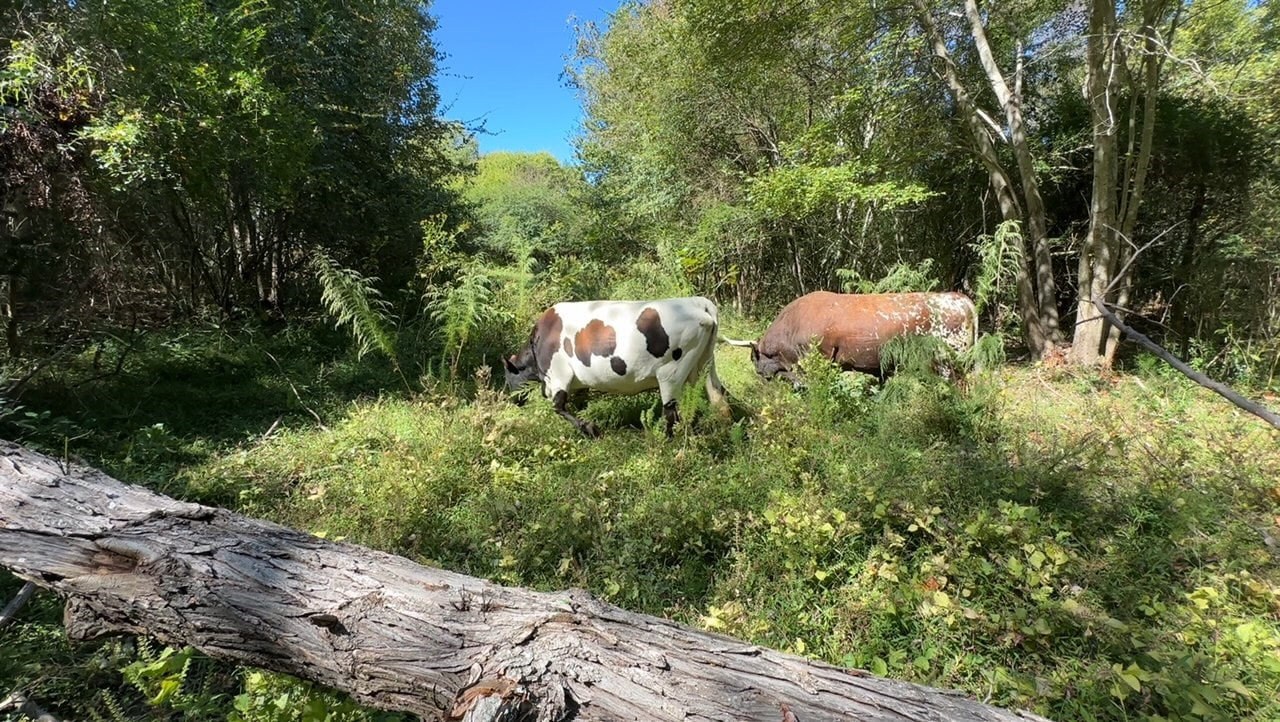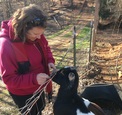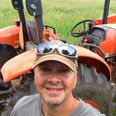Forest Management with Pineywoods Cattle
Our Pineywoods Cattle have transformed impenetrable thorny land into a flourishing forest. We have witnessed the dramatic and positive impacts of this regenerative practice in 15 acres of forest that the Pineywoods graze. Through there appetite for invasive plant species we have seen an increase in biodiversity of plants and animals, discovered sacred indigenous sites and have begun honorably harvesting medicinal plants such as Turkey Tail (Trametes versicolor) mushrooms that have been scientifically shown to have anti-cancer properties.
Our video shows some of the new plant species and one of the sacred indigenous sites and compares the managed and unmanaged forest to illustrate the dramatic improvements the Pineywoods Cattle have made. We also share some exciting news about expansion of our regenerative practices to an additional 60+ acres of forest
In the video Farmer Mike highlights the significant difference in vegetation between 15 acres of forest after Pineywoods Cattle restoration and 63 acres that have not been managed. He also emphasizes the importance of using regenerative approaches rather than spraying herbicides to manage invasive plant species despite the lack of cost-shares and grants.More here
Forest Management with Pineywoods Cattle
Funding for Regenerative Farming Practices
We're excited to announce that we have signed a contract with non-profit Accelerating Appalachia to join their Building Soil, Building Equity program. Accelerating Appalachia is helping farmers grow the regenerative economy and a resilient Appalachia and rural Southeast. They are passionate about regenerating and conserving Central/Southern Appalachia and the rural Southeast through their commitment to supporting resilient regional production and manufacturing in food, fiber and forest products.
Starting in late April 2024 we will begin working with Accelerating Appalachia to expressly outline the regenerative processes we will follow and a budget for introducing our Pineywoods Cattle herd into 63 acres of forest to help reduce invasive plants species and fire fuel. In return the forest will provide food and medicine to the Pineywoods and us. We have witnessed the dramatic and positive impacts of this regenerative practice in 15 acres of forest that the Pineywoods graze. We have seen an increase in biodiversity of plants and animals, discovered sacred indigenous sites and have begun honorably harvesting medicinal plants such as Turkey Tail (Trametes versicolor) mushrooms that have been scientifically shown to have anti-cancer properties. This is a big deal y’all. Expanding the Pineywoods into this forest is expensive. Fenceline clearing, building culverts for seasonal streams and fence building are just a few examples of expenses. As I have said before, cost-shares for spraying herbicides for forest management are readily available. This is the first time we have found an organization that helps fund forest management with livestock. We are particularly grateful to Accelerating Appalachia CEO SaraDay Evans for the open and honest discussions we have had since November 2023. Many of our previous discussions with potential funders initially seemed positive but when we got into the weeds (no pun intended) of how we farm regeneratively, there was always a stumbling block. Many times we're left feeling that the regenerative farming we practice is doing too much for the environment or we are too far down the road to get funding or the requirements for implementing them are counterproductive to our goal as a regenerative farm. It can be a bit exhausting and we've gotten used to setting our expectations low. Although we still have some work to do to determine the level of funding we will receive, Sue and I are excited to work with a non-profit such as Accelerating Appalachia. Through our discussions with SaraDay and her team, we finally feel that we have found an organization that shares our commitment to regenerative practices. We’ve been searching a long time. Accelerating Appalachia are accepting farmer applications through 2024. Learn more at http://www.acceleratingappalachia.org
0 Comments
Leave a Reply. |
Categories
All
Archives
April 2024
Check out our YouTube channel
Copyright © Turboxark Inc 2014-2024 - Terms of Use
|




 RSS Feed
RSS Feed